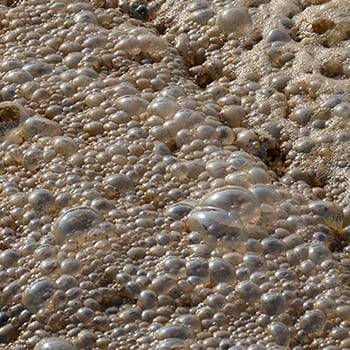A Guide to Understanding the Different Types of Defoamers Available
A Guide to Understanding the Different Types of Defoamers Available
Blog Article
The Role of Defoamers in Enhancing Item High Quality and Efficiency
In numerous manufacturing procedures, the existence of foam can significantly prevent item quality and functional performance. Defoamers act as essential ingredients that alleviate this issue, making certain smoother production operations while enhancing the visual and practical attributes of the end products (defoamers). Their application extends a plethora of markets, from food and beverage to drugs, where uniformity and reliability are vital. The selection of the appropriate defoamer can be crucial to achieving ideal results, elevating crucial questions regarding solution compatibility and efficiency metrics that merit further exploration.
Recognizing Defoamers
Understanding the role of defoamers is crucial for keeping product quality across numerous industries. Defoamers are chemical additives developed to lower and stop the development of foam in liquid systems, which can adversely impact processes such as blending, loading, and surface stress. Foaming can result in inefficiencies, item defects, and compromised visual appeal, making defoamers a critical component in making operations.
In industrial applications, defoamers assist to improve item consistency and stability. In the paint and coverings market, foam can conflict with the application procedure and the last coating. Similarly, in food and beverage manufacturing, too much foam can impede bottling and product packaging efficiency (defoamers). The effective usage of defoamers not only ensures smoother manufacturing processes but also adds to superior item performance.
Moreover, the choice and formulation of a defoamer have to align with details application needs, such as compatibility with other ingredients, effectiveness under differing temperature level and pH problems, and potential governing constraints. Inevitably, understanding defoamers' features and their value in numerous solutions is critical for maximizing manufacturing and guaranteeing the best output.
Types of Defoamers
Defoamers can be categorized right into several kinds based upon their structure and system of action. The key types include silicone-based, non-silicone organic, and inorganic defoamers.
Silicone-based defoamers are among one of the most efficient, primarily because of their ability to spread swiftly on the fluid surface area and interrupt foam formation. Their unique chemical structure permits for premium stability, making them appropriate for high-temperature applications and environments with varying pH levels.
Non-silicone natural defoamers, commonly composed of all-natural oils or fats, are valued for their biodegradability and reduced poisoning. These are commonly used in food and beverage applications where security and ecological influence are critical.
Inorganic defoamers, which consist of compounds like talc or calcium carbonate, act by enhancing the density of the liquid, thus reducing foam stability. They are often utilized in industrial processes where compatibility with various other products is not a concern.
Each kind of defoamer has unique benefits and constraints, enabling tailored options depending on the specific frothing concerns run into in different applications. Comprehending these differences is crucial for maximizing efficiency and achieving preferred product high quality.
Applications Throughout Industries
Various sectors take advantage of defoamers to boost item high quality and operational efficiency. In the food and beverage field, defoamers are critical in procedures such as brewing and dairy products production to avoid foam development, which can bring about inefficiencies and product disparity. By controlling foam, manufacturers can ensure better yield and a more uniform item.
In the pharmaceutical industry, defoamers play a vital function in the formula of liquid medicines, where extreme foam can impede mixing and precise application. Their usage aids preserve from this source the integrity of the formulas and promotes smoother production procedures.
The paint and coverings industry likewise counts on defoamers to enhance the efficiency of products during application. By reducing foam, these ingredients make sure a smoother coating and boost the visual high qualities of the end product.

Benefits of Making Use Of Defoamers
While the application of defoamers varies across industries, their benefits constantly improve product top quality and procedure performance. One considerable benefit is the reduction of foam development during manufacturing procedures, which can otherwise bring about manufacturing delays and inconsistencies in item high quality. By reducing foam, defoamers make it possible for a smoother flow of materials, facilitating extra efficient procedures and lowering the possibility of tools malfunctions.
Furthermore, making use of defoamers can improve the look and structure of end products. In markets such as layers, paints, and food handling, too much foam can endanger the aesthetic aesthetics and total top quality, while the appropriate defoamer application makes certain a consistent finish and preferable qualities. Moreover, defoamers can add to cost financial savings by decreasing waste during manufacturing and optimizing using raw products (defoamers).

Picking the Right Defoamer
Selecting the appropriate defoamer is important for maximizing production processes and guaranteeing product high quality. The selection of defoamer influences not only the performance of foam control however additionally the total efficiency qualities of the final product. Elements to think about include the sort of application, the chemistry of the formulation, and the ecological problems under which the item will certainly be used.
Different industries might need particular defoamer Learn More types, such as silicone-based, natural, or polymeric defoamers. Understanding the compatibility of the defoamer with the key ingredients is vital to avoid unfavorable reactions that can endanger item honesty. Furthermore, the defoamer's efficiency in various temperatures and pH degrees must be evaluated to ensure regular performance.
Examining the defoamer in small applications can provide valuable insights right into its performance and viability. Factor to consider of regulatory conformity, especially in food, pharmaceuticals, and cosmetics, is critical in choosing a defoamer. Eventually, a complete assessment of these factors will certainly lead to the selection of a defoamer that not only controls foam successfully yet also boosts the high quality and performance of the end product.
Verdict

In conclusion, defoamers are important ingredients that dramatically enhance item high quality and performance across numerous markets. The tactical choice and application of defoamers lead to cost financial savings, enhanced source use, and boosted customer fulfillment.
Frothing can lead to ineffectiveness, item flaws, and jeopardized visual charm, making defoamers a vital part in look these up manufacturing procedures.

Report this page